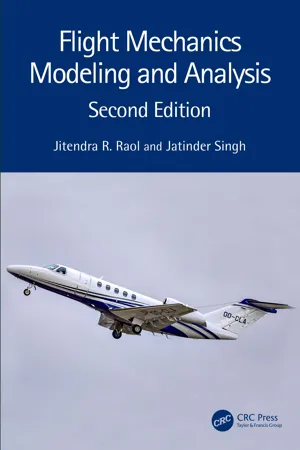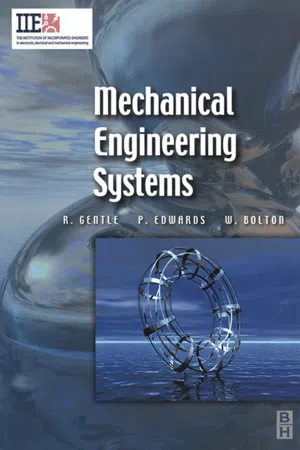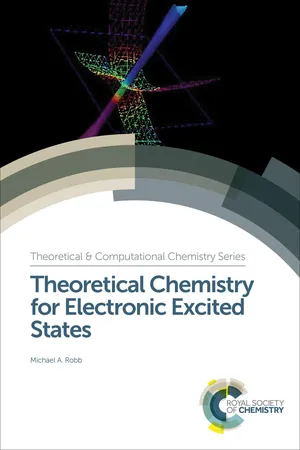Physics
Translational Dynamics
Translational dynamics refers to the study of the motion of objects and the forces acting upon them, particularly in relation to their translational motion. It involves analyzing how objects move through space and time, as well as the factors that influence their movement, such as mass, velocity, and acceleration. This field is fundamental to understanding the behavior of physical systems.
Written by Perlego with AI-assistance
Related key terms
4 Key excerpts on "Translational Dynamics"
- eBook - ePub
- Jitendra R. Raol, Jatinder Singh(Authors)
- 2023(Publication Date)
- CRC Press(Publisher)
2 Engineering DynamicsDOI: 10.1201/9781003293514-32.1 Introduction
This chapter gives the reader an insight into the various aspects of engineering dynamics. The subject of engineering dynamics is a blend of physics, applied mathematics, basic logic, and computational methods. An airplane is considered as a dynamic system, and hence, many principles and concepts of engineering dynamics are directly applicable to the study of aircraft flight mechanics–flight dynamics. Important aspects here are the use of the tools that describe the motion and solve the equations of motion of the vehicle, wherein the kinematics of a particle or a rigid body supports the laws of dynamics. The concerned scientists and engineers are interested in studying the movements of such bodies on Earth, in atmosphere, and in space and are also interested in predicting their behavior for longer time spans. Such an understanding would help them design, develop, modify, and use these vehicles for their intended purposes. The basic study actually starts with the vector mechanics algebra; however, it is presupposed to have been studied by the readers at the level of first two semesters’ course level in mathematics. The basic vector calculus can be easily used to derive the formulae for velocity and acceleration. The Newtonian mechanics plays very important role in the study of flight mechanics as dealt in Chapter 3 .The kinematical description can be understood by using either extrinsic or intrinsic coordinates: The former means that the description is extrinsic to the knowledge of the path followed by the point (rectangular Cartesian coordinates), and the latter means that the description uses the knowledge of the path. In the Cartesian coordinates, the position is known in terms of the distances measured along the three mutually orthogonal straight lines that represent reference directions. In the intrinsic coordinates, the unit vectors are defined in terms of the properties of the path, and these coordinates are known as path variables; alternatively, this description is also known as tangent and normal components. The fundamental variable for a denoted path is the arc length ‘s’ along a curve, measured from some starting point A to the point of interest, B. We also know that because ‘s’ changes with time, the position is an implicit function of time; this also means that the position is a vector function of the arc length. The velocity and acceleration are oriented parallel to the straight path. However, acceleration will not be parallel to the velocity for a smooth curvilinear path, unlesss ˙= 0 - eBook - ePub
- Richard Gentle, Peter Edwards, William Bolton(Authors)
- 2001(Publication Date)
- Newnes(Publisher)
4Dynamics
SummaryThis chapter deals with movement. In the first part the movement is considered without taking into account any forces. This is a subject called kinematics and it is important for analysing the motion of vehicles, missiles and engineering components which move backwards and forwards, by dealing with displacement, speed, velocity and acceleration. These quantities are defined when we look at uniform motion in a straight line. This subject is extended to look at the particular case of motion under the action of gravity, including trajectories. This chapter also looks at how the equations of motion in a straight line can be adapted to angular motion. Finally in the first half the subject of relative velocity is covered as this is very useful in understanding the movement of the individual components in rotating machinery.In the second part of this chapter we consider the situation where there is a resultant force or moment on a body and so it starts to move or rotate. This topic is known as dynamics and the situation is described by Newton’s laws of motion. Once moving forces are involved, we need to look at the mechanical work that is being performed and so the chapter goes on to describe work, power and efficiency. Newton’s original work in this area of dynamics was concerned with something called momentum and so this idea is also pursued here, covering the principle of conservation of momentum. The chapter extends Newton’s laws and the principle of conservation of momentum to rotary motion, and includes a brief description of d’Alembert’s principle which allows a dynamic problem to be converted into a static problem. - eBook - ePub
Stress, Strain, and Structural Dynamics
An Interactive Handbook of Formulas, Solutions, and MATLAB Toolboxes
- Bingen Yang(Author)
- 2005(Publication Date)
- Academic Press(Publisher)
Section 9.6 .9.2 Dynamics of Particles
9.2.1 PreliminariesUnits
Some commonly used quantities in engineering mechanics are listed in Table 9.2.1 , where units in both the Standard International (SI) and U.S. Customary Systems are shown.TABLE 9.2.1 UnitsNewton’s Laws
Classical mechanics was established based upon the following three laws of motion that were first stated by Isaac Newton in 1687:First Law: A particle remains at rest or moves with a constant velocity along a straight line if the sum of the forces acting on it is zero.Second Law: The rate of change of the linear momentum of a particle is equal to the sum of the forces acting on it.Third Law: The forces exerted by two particles upon each other, which are called the action and reaction forces, are equal in magnitude, opposite in direction, and collinear.Mathematically, Newton’s second law is expressed by(9.1)where m and ν are the mass and velocity of the particle, respectively; F is the resultant or sum of all forces acting on the particle; and mv is the linear momentum of the particle. If the mass m is constant, Eq. (9.1) becomes(9.2)where is the acceleration of the particle. Equation (9.2) is a commonly used expression of Newton’s second law, which indicates that the acceleration of a particle of constant mass is proportional to the resultant force.Besides Newton’s laws of motion, Newton’s law of gravitation is also important in dynamics, especially in orbital dynamics; see Sec. 9.2.6 .Force
The motion of a particle or body is caused by forces. A force is an action of pull or push applied by one body to another. A force is characterized by its magnitude, direction of action, and point of application. Thus, forces can be expressed by vectors, and superposition of forces follows the parallelogram rule of vector summation. For instance, the sum of forces F 1 and F 2 in Fig. 9.2.1(a) is obtained by the diagonal of the parallelogram formed by the forces, as shown in Fig. 9.2.1(b) - Michael A Robb(Author)
- 2018(Publication Date)
- Royal Society of Chemistry(Publisher)
CHAPTER 4 The Dynamics of Nuclear MotionIn this section we will discuss the dynamics of nuclear motion. We will start with a general discussion where we treat the nuclear motion using quantum dynamics (i.e. the time dependent Schrödinger equation). The basis we will use is moving Gaussian wavepackets. When the width of these wavepackets is made sufficiently small, one obtains classical dynamics with trajectories.4.1 Theoretical and Conceptual Introduction
In this section we shall begin our discussion of the dynamics of nuclear motion. We will follow a similar strategy to our discussion on electronic structure methods. Thus we shall start with a rather general approach. Then, having set the stage, we will discuss the various approaches that are in use. Again, our objective is not to go into any great detail on any particular approach, but rather to focus on the general and conceptual aspects, leaving the reader to explore a particular method that is of interest in further depth. There are many reviews and papers that cover the breadth of the subject.2 –10In particular, the book by Gatti3 contains a collection of articles on theory and applications. These are focused on quantum dynamics, but we take the view that, for the reader of this book, possibly a newcomer to the field, it may be better to start with this more general approach even if one is more likely to be doing classical dynamics on big molecules.We shall introduce the subject with just a few equations and four figures (Figures 4.1 –4.4 ). In Section 1.4.2 we introduced the idea of classical dynamics (the Newton equations) yielding eqn (1.6) and (1.7), where dynamics is driven by the gradient (eqn (1.6)) of the particular electronic state under consideration. The motion of the molecular system driven in this way is normally referred to as a trajectory. A trajectory describes how the internal degrees of freedom change with time. The dynamics equations are normally solved “on-the-fly” using eqn (1.7).11
Index pages curate the most relevant extracts from our library of academic textbooks. They’ve been created using an in-house natural language model (NLM), each adding context and meaning to key research topics.



